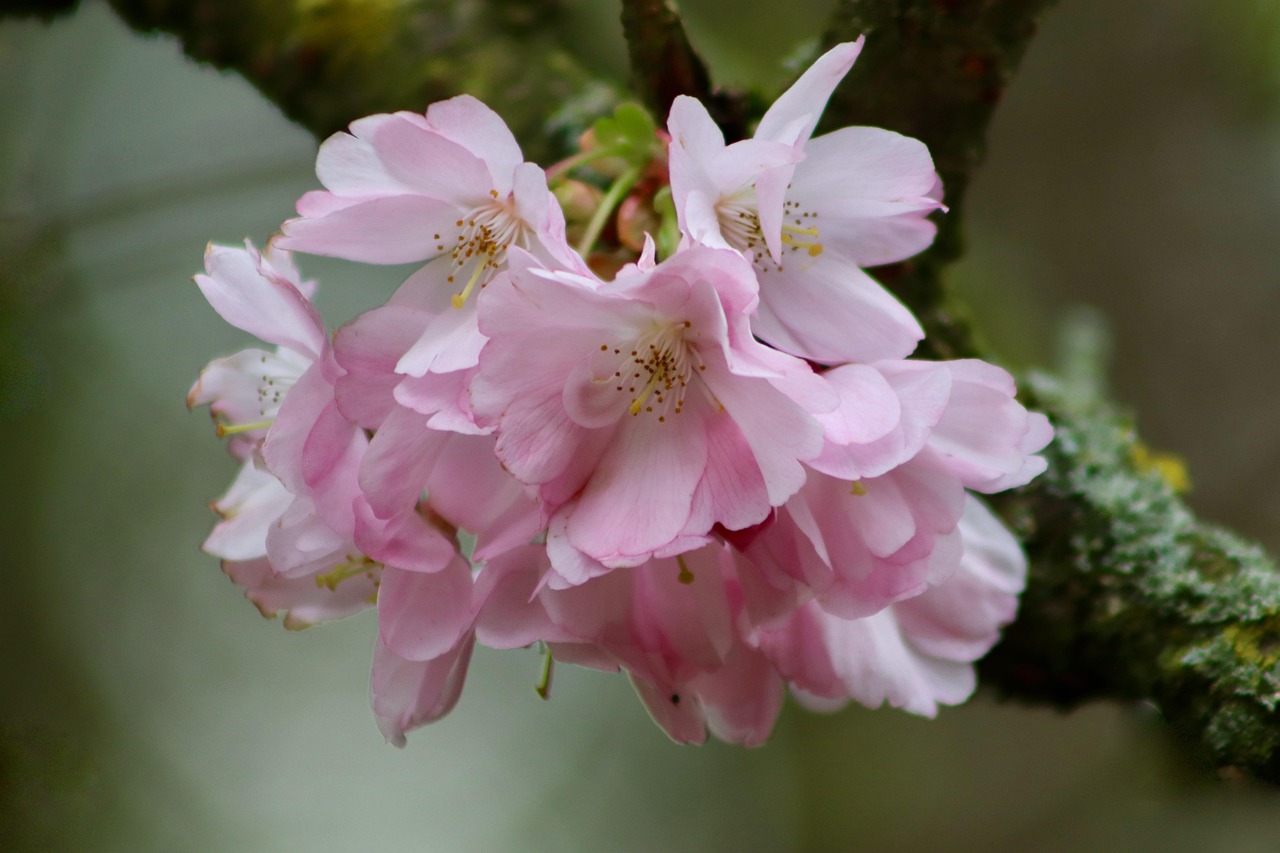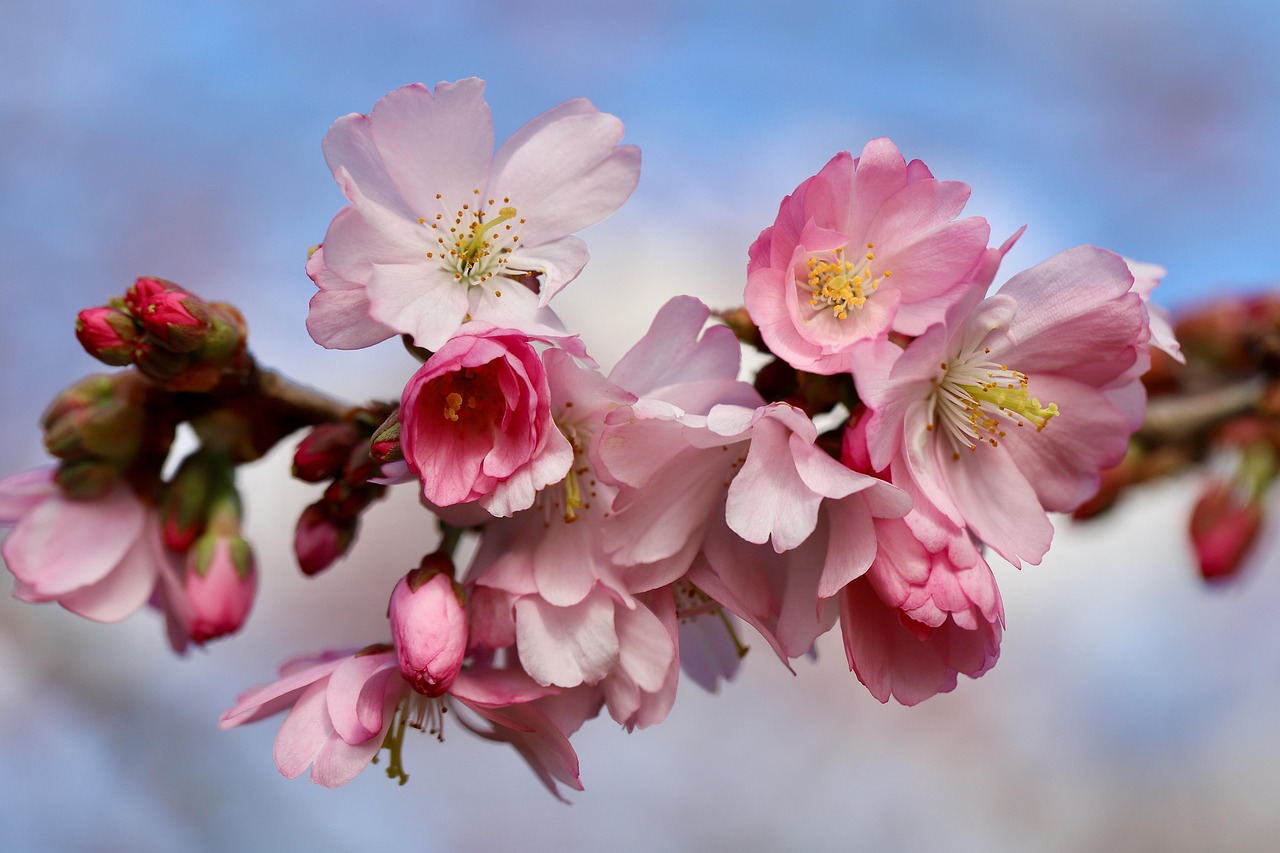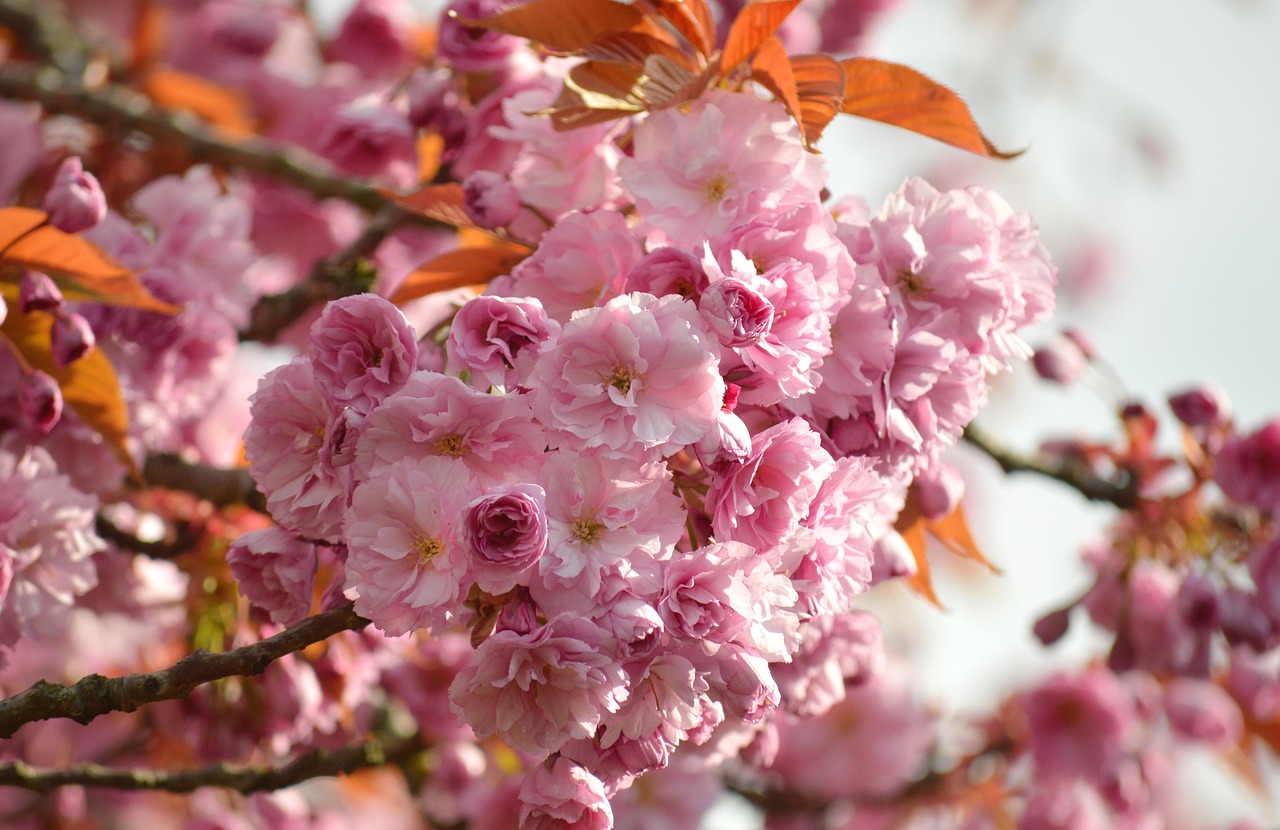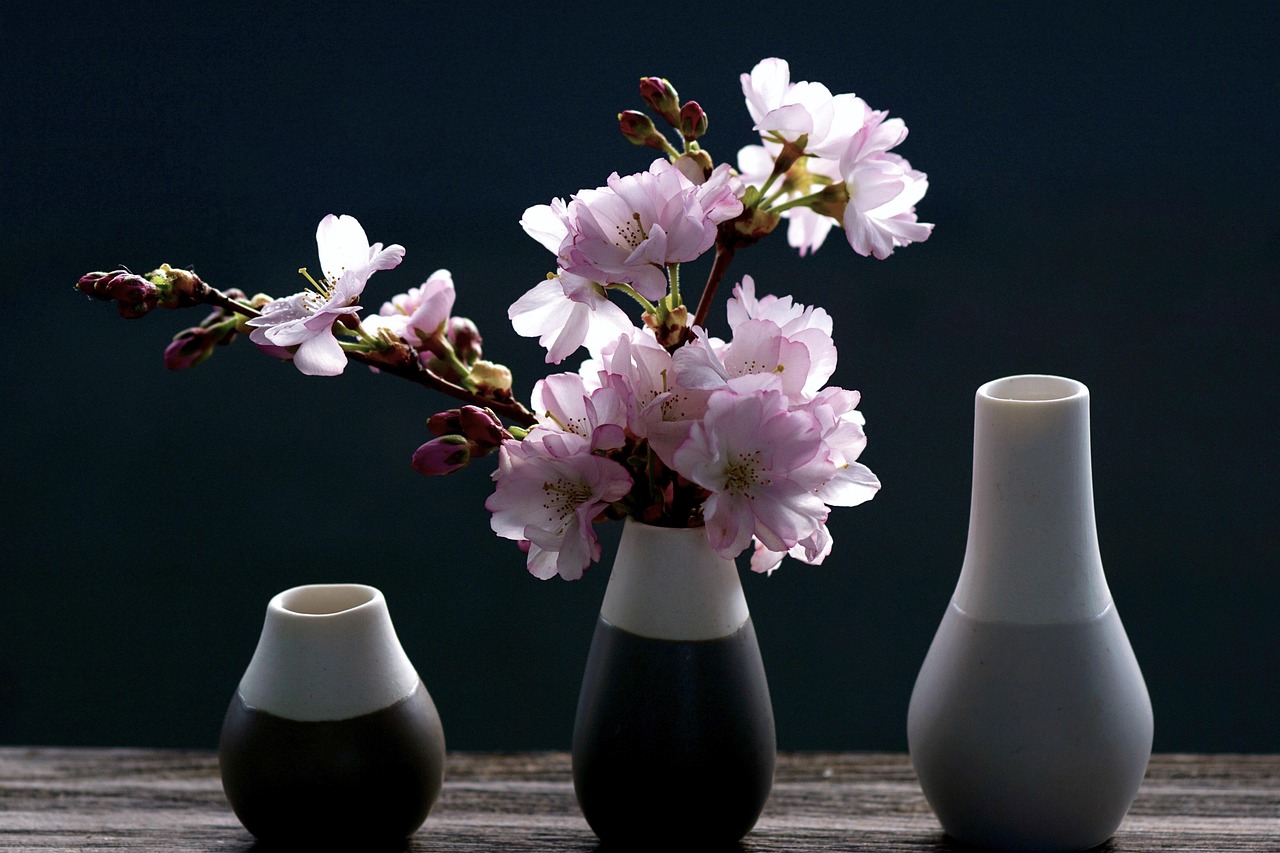After seasonal pruning, maintaining cherry blossoms involves proper watering, mulching, fertilizing, and monitoring for pests and diseases. These practices ensure healthy growth and vibrant blooms in the following season.
Cherry blossoms are cherished for their breathtaking beauty and fleeting presence. Known scientifically as Prunus serrulata, these trees attract attention during their short blooming period in spring. However, to keep them healthy and looking their best, regular maintenance is crucial, especially after pruning. Seasonal pruning helps to shape the tree, remove dead or diseased branches, and promote new growth.

Understanding how to care for cherry blossoms post-pruning is essential for every gardener. After pruning, the tree is more vulnerable to environmental stressors and pests. Therefore, it is important to implement a careful maintenance routine that will support its recovery and growth. This routine should include watering, mulching, fertilizing, and pest management.
Watering Practices
Proper watering is one of the most critical aspects of cherry blossom maintenance after pruning. Newly pruned trees may experience shock, making them more susceptible to drought stress. Here are some key points to consider:
- Water the tree deeply and consistently for the first few weeks after pruning.
- Check the soil moisture regularly, especially during dry spells.
- Ensure that the water reaches the root zone, which is typically 12-18 inches deep.
- Avoid overwatering, as this can lead to root rot.
During the growing season, cherry blossoms generally require about 1 inch of water per week. This can be achieved through rainfall or supplemental watering. Using a soaker hose or drip irrigation system can be beneficial for delivering water directly to the roots without saturating the foliage.

Mulching Techniques
Applying mulch around cherry blossom trees is another effective maintenance strategy post-pruning. Mulch helps retain soil moisture, suppress weeds, and regulate soil temperature. It also adds organic matter as it breaks down, enhancing soil health. Here are some tips on how to mulch properly:
- Use organic materials such as wood chips, straw, or shredded leaves.
- Apply a layer of mulch 2-4 inches thick around the base of the tree.
- Keep the mulch at least 6 inches away from the trunk to prevent rot.
- Replenish mulch as needed throughout the growing season.
By employing proper mulching techniques, you can significantly improve the overall health of your cherry blossom trees during their recovery period after pruning.
Fertilizing Cherry Blossoms
After seasonal pruning, fertilization plays a vital role in promoting new growth and enhancing flowering. A balanced fertilizer will provide essential nutrients that support healthy development. Consider the following when fertilizing:

- Choose a slow-release fertilizer with equal parts nitrogen, phosphorus, and potassium (N-P-K).
- Apply fertilizer in early spring, just before new growth begins.
- Follow the recommended dosage on the fertilizer package based on the size of your tree.
- Avoid over-fertilizing, as this can lead to excessive leaf growth at the expense of flowers.
Regular fertilization can help ensure that your cherry blossoms produce vibrant blooms year after year. It is also beneficial to perform a soil test before fertilizing to determine specific nutrient needs.
Pest and Disease Management
Pests and diseases can pose significant threats to cherry blossoms following pruning. After making cuts to the tree, it is essential to monitor for any signs of trouble. Here are common pests and diseases to watch out for:
| Pest/Disease | Description | Management Strategies |
|---|---|---|
| Cherry Fruit Fly | A small fly that lays eggs in cherry fruits. | Use insect traps and remove affected fruit promptly. |
| Powdery Mildew | A fungal disease that appears as white powder on leaves. | Improve air circulation and apply fungicides if necessary. |
| Aphids | Small insects that suck sap from leaves and stems. | Introduce beneficial insects like ladybugs or use insecticidal soap. |
| Black Knot | A fungal disease causing dark growths on branches. | Prune out infected branches and destroy them. |
Regular inspections will help identify any issues early on, allowing for timely interventions. Keeping your cherry blossom trees healthy requires vigilance against these threats after pruning.

Caring for cherry blossoms after seasonal pruning is vital for their longevity and beauty. By focusing on watering, mulching, fertilizing, and managing pests and diseases, you can create a thriving environment for these stunning trees.
Seasonal Timing for Maintenance
Understanding the timing of maintenance activities is crucial for the health of cherry blossom trees. Different tasks should be performed at specific times of the year to align with the tree’s growth cycle. This section will outline the best seasonal practices to follow after pruning.
Spring Maintenance
Spring is a vital time for cherry blossoms, as they are waking up from dormancy. After pruning in late winter or early spring, it is essential to focus on the following:
- Watering: Begin with deep watering to help the tree recover from pruning shock.
- Fertilization: Apply a balanced fertilizer as the buds begin to swell, promoting vigorous growth.
- Pest Monitoring: Increase inspections for pests like aphids, which thrive in spring.
- Mulching: Refresh mulch to retain moisture and suppress weeds.
By adhering to these practices in spring, cherry blossom trees will have the best chance to recover and grow successfully.
Summer Care
As temperatures rise, cherry blossoms require ongoing care to support their growth. Summer maintenance focuses on managing stressors such as heat and drought:
- Irrigation: Maintain consistent moisture during dry spells. Water trees deeply once or twice a week.
- Weed Control: Regularly remove weeds that compete for nutrients and water.
- Pest Control: Continue monitoring for pests and diseases, particularly if conditions are humid.
During summer, it’s also beneficial to prune any dead or damaged branches that may have emerged after the initial pruning. This promotes airflow and reduces disease risk.
Fall Preparations
As fall approaches, cherry blossom trees begin to prepare for dormancy. Fall maintenance is crucial for ensuring that the trees remain healthy through winter:
- Watering: Ensure that trees are well-watered before the ground freezes.
- Mulch Application: Add a fresh layer of mulch to insulate roots against cold temperatures.
- Pest Management: Inspect for late-season pests and take action as needed to prevent winter infestations.
Additionally, consider applying a slow-release fertilizer in early fall to provide nutrients as the tree prepares for winter dormancy. This strategy supports root development and overall health.
Winter Care
Winter can be a challenging time for cherry blossoms. While they are dormant, some care is still necessary:
- Protection from Frost: Consider wrapping young trees with burlap or using tree guards to shield them from harsh winds and frost.
- Pruning Review: Inspect your tree for any necessary corrective pruning during warm spells in winter.
- Pest Prevention: Take measures to prevent pests from overwintering in your trees by cleaning debris around the base.
By implementing these winter practices, you can help ensure your cherry blossoms emerge healthy and ready to flourish in the spring.
Common Challenges After Pruning
Even with careful maintenance, cherry blossom trees can face challenges after pruning. Being aware of these potential issues can help you take proactive measures. Here are some common challenges:
Tree Stress
After pruning, trees may experience stress due to the loss of foliage and branches. Signs of stress include:
- Pale or wilting leaves
- Stunted growth
- Bark splitting or unusual cracks
If you notice signs of stress, ensure that your tree receives adequate water and nutrients. Avoid over-fertilizing, which can exacerbate stress symptoms.
Disease Susceptibility
Pruned trees may be more susceptible to diseases such as cankers and root rot. To mitigate these risks, consider the following:
- Make clean cuts when pruning to minimize injury.
- Avoid excessive moisture around the base of the tree.
- Regularly inspect for signs of disease and act quickly if detected.
Treat any identified diseases with appropriate fungicides or by removing affected areas promptly.
Pest Infestation
Pests can become a significant issue after pruning, especially if not monitored closely. Common pests include:
- Spider mites
- Scale insects
- Caterpillars
Using organic pest control methods can help maintain a healthy ecosystem around your garden. Introduce beneficial insects or use insecticidal soaps as part of your pest management strategy.
Tools and Equipment for Maintenance
Having the right tools can make cherry blossom maintenance more efficient and effective. Here are some essential tools you should consider:
- Pruning Shears: Essential for making clean cuts during pruning.
- Loppers: Useful for cutting thicker branches that are difficult to reach.
- Soaker Hose: Ideal for delivering water directly to the roots without wetting foliage.
- Trowel: Handy for planting and mulching around the tree base.
- Pesticide Sprayer: For applying pest control solutions effectively.
Investing in quality tools not only makes maintenance easier but also promotes better care for your cherry blossom trees over time.
Advanced Techniques for Cherry Blossom Maintenance
Beyond basic care, advanced techniques can enhance the health and beauty of cherry blossom trees after seasonal pruning. These techniques focus on optimizing growth, improving resistance to diseases, and enhancing flowering. This section explores methods such as grafting, controlled watering, and soil enhancement.
Grafting Techniques
Grafting is a horticultural technique that allows you to combine the desirable traits of two different plants. For cherry blossoms, this can be particularly useful for:
- Improving disease resistance.
- Enhancing flowering characteristics.
- Creating unique varieties with different flower colors or shapes.
To successfully graft cherry blossoms, follow these steps:
- Select the Scion: Choose a healthy branch from the desired variety.
- Prepare the Rootstock: Use a robust rootstock that is compatible with the scion.
- Make Cuts: Create a clean cut on both the scion and rootstock to ensure proper alignment.
- Join the Two: Fit the scion onto the rootstock and secure it using grafting tape or wax.
- Care for the Graft: Keep the grafted area moist and protected from direct sunlight.
Grafting can yield beautiful hybrid trees with improved characteristics, enhancing your garden’s aesthetic appeal.
Controlled Watering Techniques
Watering practices can greatly influence tree health. Controlled watering helps prevent overwatering, which can lead to root rot, and under-watering, which can stress the tree. Consider these methods:
- Drip Irrigation: This method delivers water directly to the roots, minimizing waste and ensuring deep moisture penetration.
- Soil Moisture Sensors: Install sensors to monitor soil moisture levels. This technology allows you to water only when necessary.
- Watering Schedule: Create a watering schedule based on seasonal weather patterns and soil conditions.
Implementing controlled watering techniques can promote healthier root systems and overall tree vitality.
Soil Enhancement Strategies
Healthy soil is fundamental to the growth of cherry blossoms. Enhancing soil quality can improve nutrient availability and promote strong root systems. Here are effective strategies for soil enhancement:
- Organic Matter Addition: Incorporate compost or well-rotted manure into the soil to boost nutrient levels and improve soil structure.
- pH Testing: Conduct regular soil tests to understand pH levels. Cherry blossoms thrive in slightly acidic to neutral soil (pH 6.0 – 7.0).
- Mulching with Organic Materials: Use organic mulch not only for moisture retention but also as it breaks down, enriching the soil with nutrients.
Well-enhanced soil supports healthy growth and vibrant blooms in cherry blossom trees.
Seasonal Challenges and How to Overcome Them
Caring for cherry blossoms involves navigating various seasonal challenges. Being prepared can make a significant difference in the health of your trees. This section discusses common challenges faced throughout the year and offers solutions.
Spring Challenges
In spring, cherry blossom trees may face issues such as late frosts and sudden temperature fluctuations. Here are ways to mitigate these risks:
- Frost Protection: Use frost cloths or blankets to cover trees during unexpected cold snaps.
- Pest Awareness: Monitor for pests that emerge in spring, such as scale insects and aphids. Use appropriate pest control measures early on.
Failing to address these spring challenges can lead to reduced blooming and overall tree health.
Summer Stressors
The summer heat can stress cherry blossoms, making them more susceptible to diseases and pests. To combat summer stressors, consider these strategies:
- Shade Cloths: Provide temporary shade during extreme heat waves to protect leaves from sunburn.
- Irrigation Adjustments: Increase watering frequency during particularly hot periods while ensuring proper drainage.
Caring for cherry blossoms during summer ensures they remain vibrant and healthy as they prepare for fall.
Fall Preparations for Winter
The transition into winter is crucial for cherry blossoms. Preparing them properly will help them endure the cold months. Here are essential fall preparations:
- Mulching: Apply a thick layer of mulch to insulate roots and retain moisture.
- Pest Control Measures: Clear fallen leaves and debris that may harbor pests over winter.
This careful preparation helps protect cherry blossom trees from winter damage, ensuring they emerge healthy come spring.
Cultivating Healthy Cherry Blossom Trees
The ultimate goal of maintaining cherry blossoms after seasonal pruning is cultivating healthy trees that produce beautiful blooms year after year. The following practices contribute to long-term health:
- Regular Pruning: Continue with light pruning beyond seasonal pruning to remove any dead or diseased branches throughout the year.
- Nutrient Management: Adjust fertilization practices based on seasonal needs and soil test results.
- Pest and Disease Vigilance: Maintain regular inspections throughout the year to catch potential problems early.
Following these practices will help ensure that your cherry blossom trees thrive and enhance your landscape with their stunning blooms.
Enhancing Cherry Blossom Aesthetics
In addition to maintaining the health of cherry blossom trees, enhancing their aesthetics can transform your landscape. Beautifully maintained cherry blossoms not only provide visual appeal but also attract wildlife and create a serene environment. Here are some strategies to enhance their aesthetics:
Companion Planting
Companion planting involves growing other plants alongside cherry blossoms to improve their overall appearance and health. Consider these companion plants:
- Spring Bulbs: Planting bulbs such as daffodils or tulips around the base can create a stunning color contrast with the cherry blossoms.
- Ground Covers: Low-growing ground covers like creeping thyme or moss can enhance visual appeal while preventing weed growth.
- Flowering Perennials: Mix in perennials that bloom at the same time as cherry blossoms for a cohesive look.
Companion plants not only beautify the area but can also improve soil health and deter pests.
Pruning for Shape and Health
Regular pruning can be utilized not just for health but also for shaping the tree. Consider the following approaches:
- Maintain a Central Leader: Keep a dominant central trunk to promote a strong structure.
- Encourage Open Canopy: Prune lower branches to allow light to penetrate the canopy, enhancing growth and bloom.
- Remove Suckers: Regularly remove suckers that grow from the base or roots, as they can detract from the tree’s shape.
Shaping your cherry blossom trees will enhance their natural beauty and ensure they remain healthy.
Seasonal Events and Community Engagement
Cherishing cherry blossoms goes beyond personal gardening; it can also involve community engagement and seasonal events. Participating in local events can help foster appreciation for these beautiful trees. Here are some ideas:
- Cherry Blossom Festivals: Many regions host annual cherry blossom festivals where communities celebrate the blooming season with activities, food, and art.
- Community Planting Days: Organize or participate in planting new cherry blossom trees in public parks or community spaces.
- Workshops and Educational Events: Attend workshops on cherry blossom care or offer to teach others about maintenance practices.
These events not only promote community spirit but also encourage environmental stewardship.
Final Thoughts
Caring for cherry blossom trees after seasonal pruning is an ongoing journey that requires attention, knowledge, and dedication. By implementing proper watering techniques, mulching strategies, and vigilant pest management, you can ensure your trees remain healthy and vibrant. Advanced techniques such as grafting and soil enhancement can further contribute to their beauty and longevity.
The aesthetic appeal of cherry blossoms can be heightened through companion planting and thoughtful pruning. Engaging with your community during seasonal events promotes appreciation for these stunning trees while fostering connections with others who share your passion. Ultimately, maintaining cherry blossoms is about creating a thriving ecosystem that brings beauty and joy to your landscape year after year.
With the right practices in place, your cherry blossom trees will not only survive but thrive, providing breathtaking displays of color each spring. Embrace this rewarding journey and watch as your efforts transform your garden into a spectacular spectacle of nature’s beauty.
